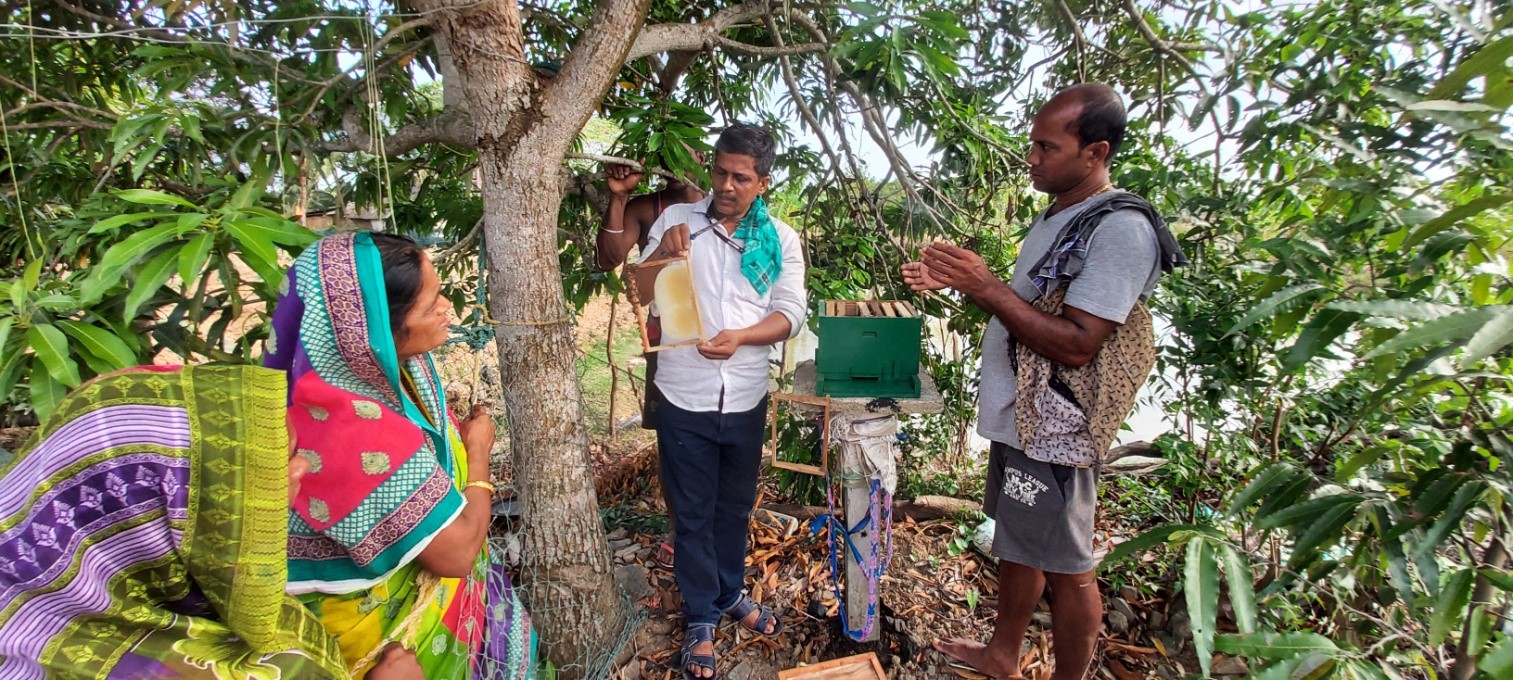Direct Livelihood Support through Ecosystem Restoration Actions
Collection of Mangrove Seeds
Tamil Nadu/DHAN
Green recovery measures which invest in ecosystem restoration and management (e.g. wetland restoration) offer opportunities for creating employment for local communities through surplus labour in the short-term while building medium to long-term resilience through healthy ecosystems.
During the pandemic, with unprecedented challenges to lives and livelihoods, there was widespread economic and social disruption, with an increased risk of people falling into extreme poverty and further exploitation of available natural resources. In these scenarios, marginalised communities such as farmers, fishers and urban workers who had to return to their villages were most at risk of poverty, malnutrition, and disease.
Waged and self-employed workers were expected to rely on natural resources as market chains were affected by the pandemic. Moreover, wise use of natural resources was not a priority in this crisis and thus foreseen that ecosystems would be (over)exploited. Designing and implementing measures to restore ecosystems would therefore be useful not only to meet the immediate needs of the population, but also to safeguard future interests and build the economic, social, and climatic resilience of communities and other ecosystem dependants.
With this in mind, two of the pilot sites (Bhitarkanika in Odisha and Point Calimere in Tamil Nadu) have implemented green recovery activities, which support direct wages through ecological restoration activities.
The project team already had a broad understanding of the area, the demographics, and threats to the area due to integrated management planning processes that were already underway. These included stakeholder consultations and assessments on hydrology, ecosystem services, livelihood linkages and climate risks.
This understanding, together with the conduct of participatory community consultations at project sites to identify and prioritise livelihood-oriented conservation and restoration activities, helped in the design of site-specific green restoration activities. Participatory selection of areas for conservation and restoration through consultative processes and community-led discussions also contributed to their successful implementation.
Through restoration activities (e.g. restoration of waterways, regeneration of mangroves, etc.) a symbiotic relationship was designed that has allowed for improved wetland habitats that host endangered migratory birds and other species, while also allowing for financial gains for local communities through potential harvesting in the non-protected areas. The result was a revival of the native ecosystem. The social capital built through these actions and the networks of community groups formed will help build stewardship for wetland conservation. Furthermore, the development of monitoring plans for these actions helped to keep track of the interventions and to adapt them to changing needs and situations.
Paramount for the successful implementation was the presence of a local organisation working closely with the community. Its presence and coordination helped to establish institutional arrangements at the community level and brought in a local context that helped to design and implement interventions that were socially and culturally sensitive, yet effective. Given the diversity of languages, communities, and ethnicities in the country, having a local institution helps not only contextualising intervention but also ensuring their sustainability. This partnership has further translated into other meaningful interventions that came forth form this experience and have been possible through these agencies.
